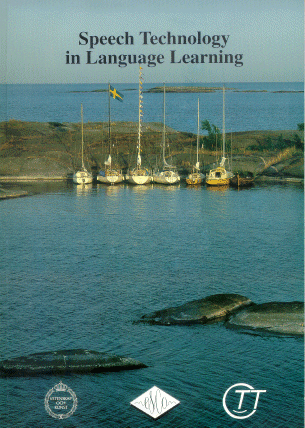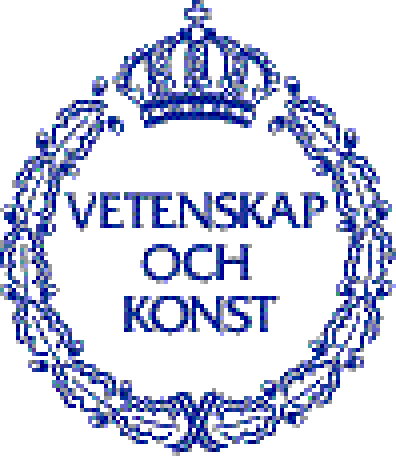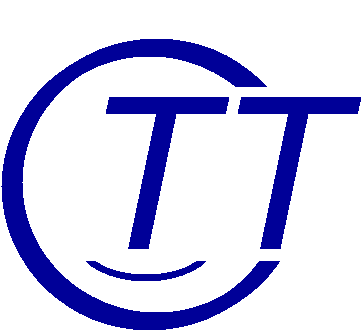|
Speech Technology in Language Learning May 25-27 1998, Marholmen, Sweden The proceedings of STiLL can be ordered through ISCA (ESCA). |
 |
Contents
| James Flege | Second-language speech learning: The role of subject and phonetic variables | 1 | ||
| Philippe Delcloque & Claire Campbell | An intelligent tutor for the acquisition of French pronunciation within the communicative approach to language learning. The secondary and tertiary solutions | 9 | ||
| Kathleen B Egan & Anita H Kulman | A proficiency-oriented analysis of computer-assisted language learning | 13 | ||
| Ineke Mennen | Can language learners ever acquire the intonation of a second language? | 17 | ||
| Julie Wallace, Martin Russell, Catherine Brown & Adrian Skilling | Applications of speech recognition in the primary school classroom | 21 | ||
| Jonathan Dalby, Diane Kewley-Port & Roy Sillings | Language-specific pronunciation training using the HearSay system | 25 | ||
| Jean-Pierre Messager, Hervé Gourmelon, Guy Mercier & Jacques Siroux | Research in speech processing for Breton language training | 29 | ||
| A Álvarez, R Martinez, P Gómez & J L Domínguez | A signal processing technique for speech visualization | 33 | ||
| William Byrne, Eva Knodt, Sanjeev Khudanpur & Jared Bernstein | Is automatic speech recognition ready for non-native speech? A data collection effort and initial experiments in modeling conversational Hispanic English | 37 | ||
| Philippe Langlais, Anne-Marie Öster & Björn Granström | Automatic detection of mispronunciation in non-native Swedish speech | 41 | ||
| Mariko Kondo | The use of prosody for acquisition of Japanese mora-timing by English speakers | 45 | ||
| Anna Sundström | Automatic prosody modification as a means for foreign language pronunciation training | 49 | ||
| J van Doorn, J Shakeshaft, A Winkworth, L Hand, S Joshi | Models of Australian English vowels for commercial visual feedback systems | 53 | ||
| Rodolfo Delmonte | Prosodic modeling for automatic language tutors | 57 | ||
| Leonardo Neumeyer, Horacio Franco, Victor Abrash, Luc Julia, Orith Ronen, Harry Bratt, Jehan Bing, Vassilis Digalakis & Marikka Rypa | WebGraderTM: A multilingual pronunciation practice tool | 61 | ||
| Jim Meador, Farzad Ehsani, Kathleen Egan & Steve Stokowski | An interactive dialog system for learning Japanese | 65 | ||
| Stefan Auberg, Nelson Correa, Martin Rothenberg & Mark Shanahan | Vowel and intonation training in an English pronunciation tutor | 69 | ||
| Goh Kawai & Keikichi Hirose | A CALL system using speech recognition to teach the pronunciation of Japanese tokushuhaku | 73 | ||
| Maxine Eskenazi & Scott Hansma | The Fluency pronunciation trainer | 77 | ||
| Patti Price | How can speech technology replicate and complement skills of good language teachers in ways that help people to learn language? | 81 | ||
| Horacio Franco, Leonardo Neumeyer & Harry Bratt | Modeling intra-word pauses in pronunciation scoring | 87 | ||
| Bob Sevenster, Guus de Krom & Gerrit Bloothooft | Evaluation and training of second-language learners´ pronunciation using phoneme-based HMMs | 91 | ||
| Catia Cucchiarini, Helmer Strik & Lou Boves | Automatic pronunciation grading for Dutch | 95 | ||
| Silke Witt & Steve Young | Performance measures for phone-level pronunciation teaching in CALL | 99 | ||
| Stefan Auberg, Nelson Correa, Victoria Locktionova, Richard Molitor & Martin Rothenberg | The accent coach: An English pronunciation training system for Japanese speakers | 101 | ||
| John S Pruitt, Hideki Kawahara, Reiko Akahane-Yamada & Rieko Kubo | Methods of enhancing speech stimuli for perceptual training: Exaggerated articulation, context truncation, and "STRAIGHT" re-synthesis | 105 | ||
| Reiko Akahane-Yamada, Takahiro Adachi, Hideki Kawahara, John S Pruitt & Erik McDermott | Toward the optimization of computer-based second-language production training | 109 | ||
| Matthias Jilka & Gregor Möhler | Intonational foreign accent: speech technology and foreign language teaching | 113 | ||
| Valerie Hazan & A Simpson | The effect of cue-enhancement on consonant perception by non-native listeners: preliminary results | 117 | ||
| Kazuo Nakayama, Kaoru Tomita-Nakayama & M Misaki | Enhancing speech perception of
Japanese learners of English. Utilizing time-scale modification of speech
and related techniques
|
121 | ||
| S Ciocea, M Dufranne, J Schoentgen & R Beeckmans | A multi-modal software interface for teaching phonetic transcription | 125 | ||
| Håkan Larsson | Lingus - a general purpose computer aided langage learning system which could serve as a platform for the implementation of speech analysis tools | 129 | ||
| Asoke Kumar Datta | Stress: An augmented articulatory effort | 133 | ||
| Paulina Dalva Artimonte Rocca | The efficacy of computer-driven visual feedback in the teaching of intonation to Brazilian learners of English | 137 | ||
| Daan Wissing & Johann van der Walt | Teaching aspirated stops of English to Arab speakers: Technological vs. conventional methods | 141 | ||
| N M Brooke & S D Scott | An audio-visual speech synthesiser | 145 | ||
| Jan Nouza & Jana Mádlíková | Evaluation tests on visual feedback in speech and language learning | 149 | ||
| Robert McAllister | Second language perception and the concept of foreign accent | 153 | ||
| Ingrid Jonsson | Multi-sensory stimulation of voice, speech and sounds from surroundings in hard-of-hearing preschool children | 157 | ||
| Ron Cole, Tim Carmell, Pam Connors, Mike Macon, Johan Wouters, Jacques de Villiers, Alice Tarachow, Dominic Massaro, Michael Cohen, Jonas Beskow, Jie Yang, Uwe Meier, Alex Waibel, Pat Stone, George Fortier, Alice Davis & Chris Soland | Intelligent animated agents for interactive language training | 161 | ||
| Pierre Badin, Gérard Bailly & Louis-Jean Boë | Towards the use of a Virtual Talking Head and of Speech Mapping tools for pronunciation training | 165 | ||
| Dominic W Massaro & Michael M Cohen | Visible speech and its potential
value for speech training for hearing-impaired perceivers
|
169 | ||
| Jared Bernstein | New uses for speech technology
in language education
|
173 | ||
| Brent Townshend, Jared Bernstein, Ognjen Todic & Eryk Warren | Estimation of spoken language proficiency | 177 | ||
| Sarah Davies & Massimo Poesio | A CSLUrp-based spoken dialogue system for teaching English as a foreign language | 181 | ||
| Mieke Devlieger | The applicability of speech recognition in the context of task-based language learning for young children | 185 | ||


